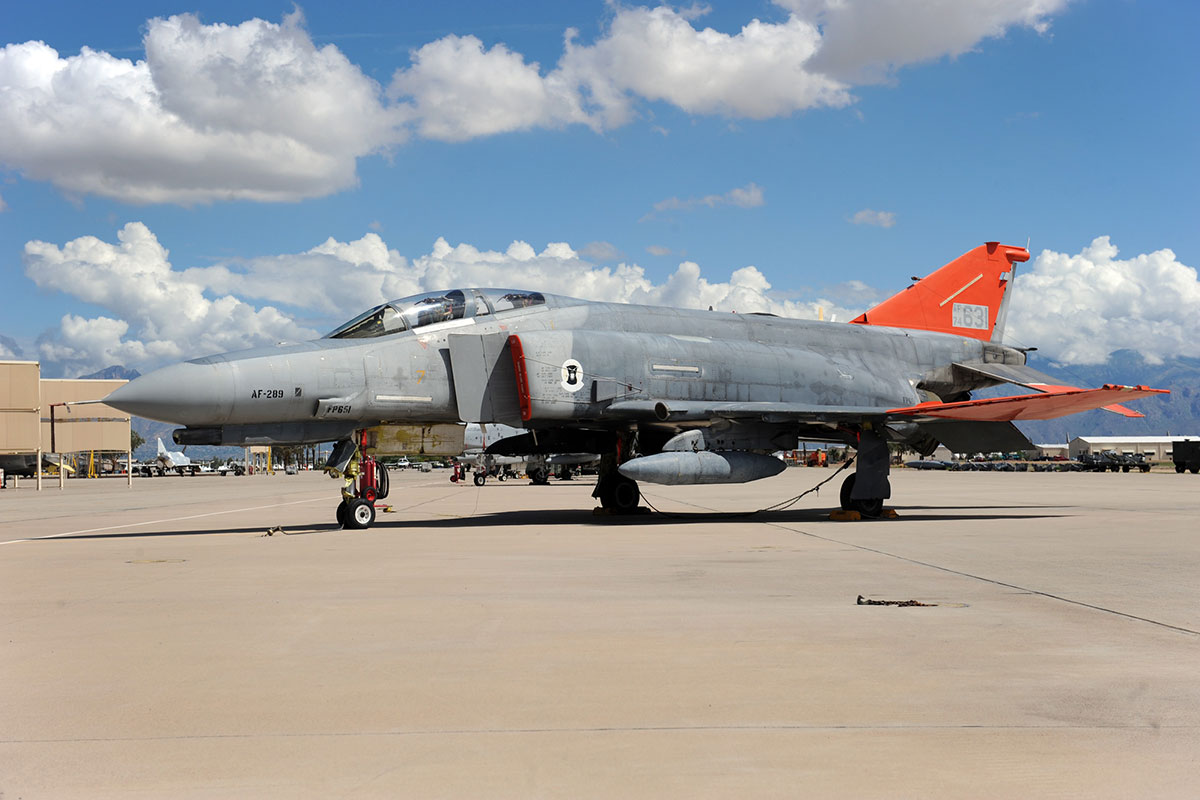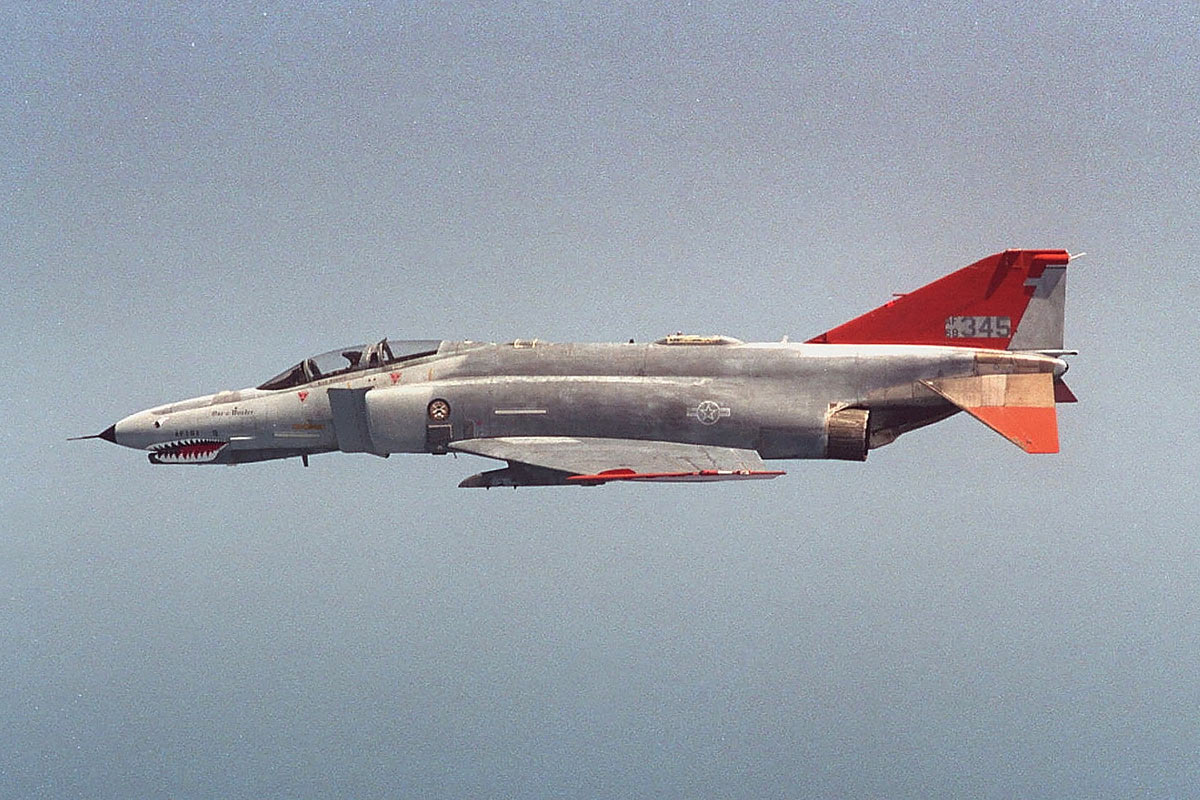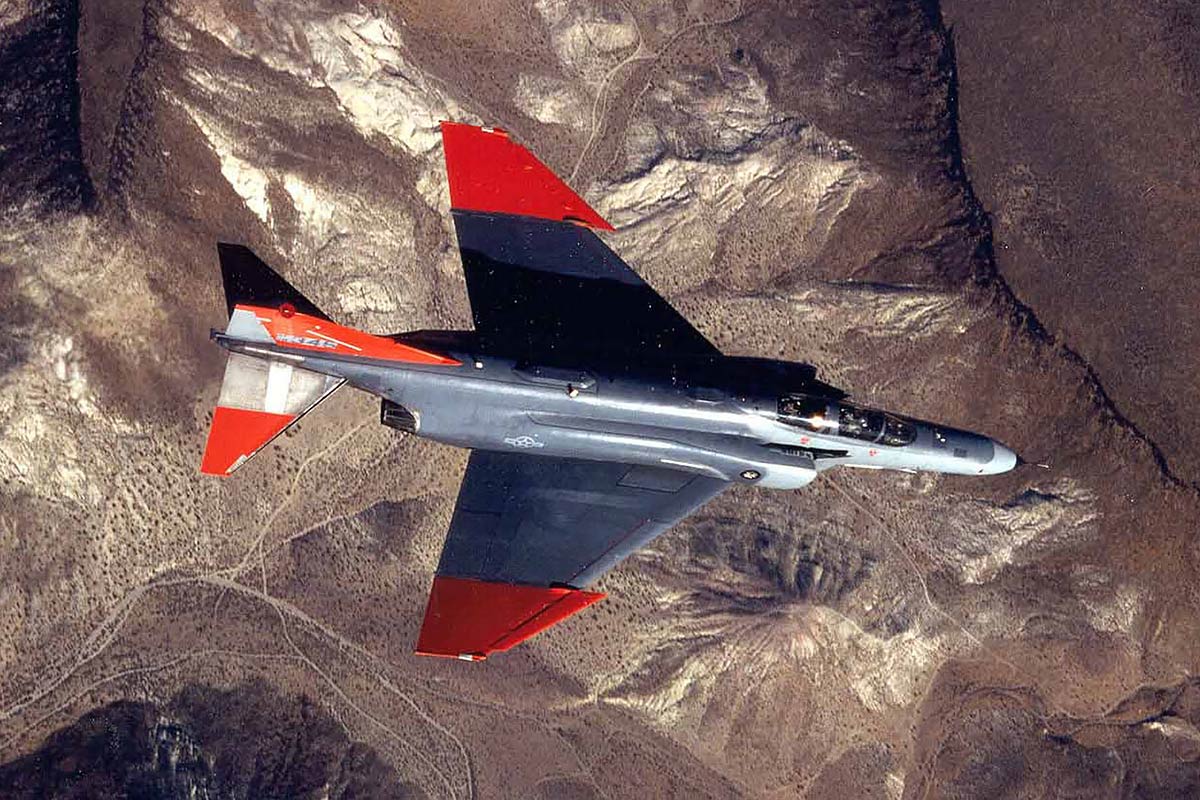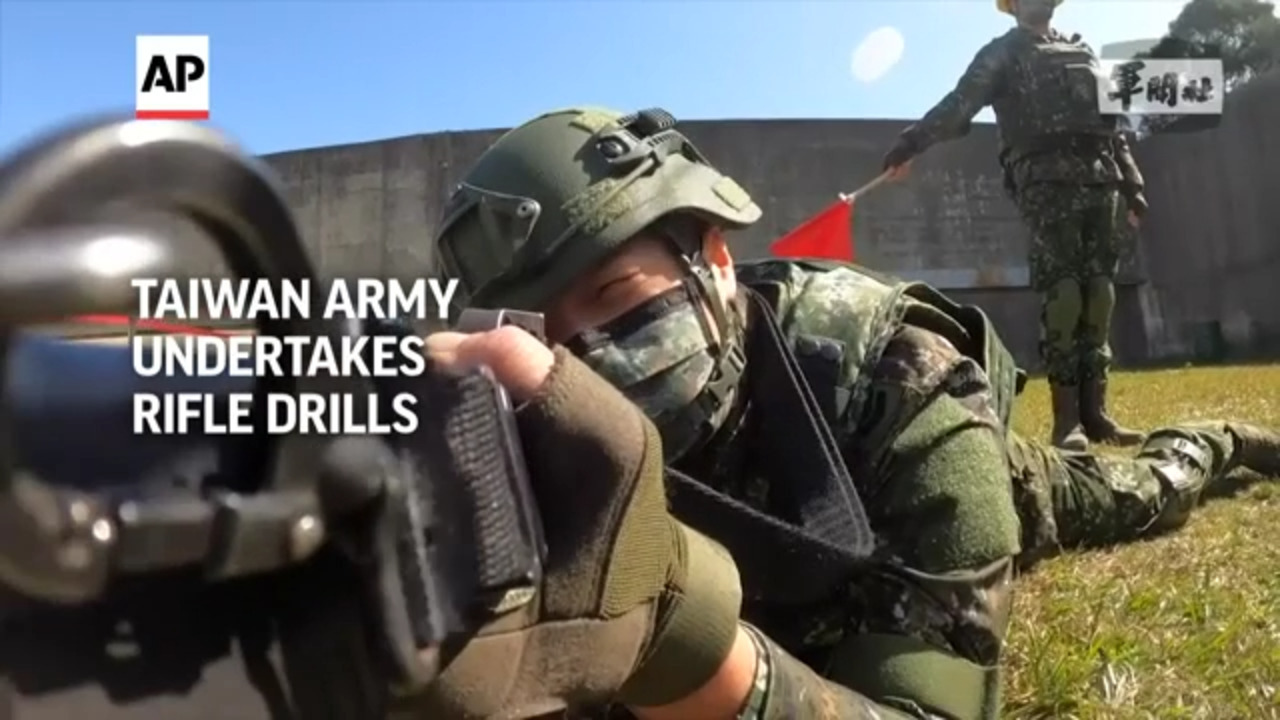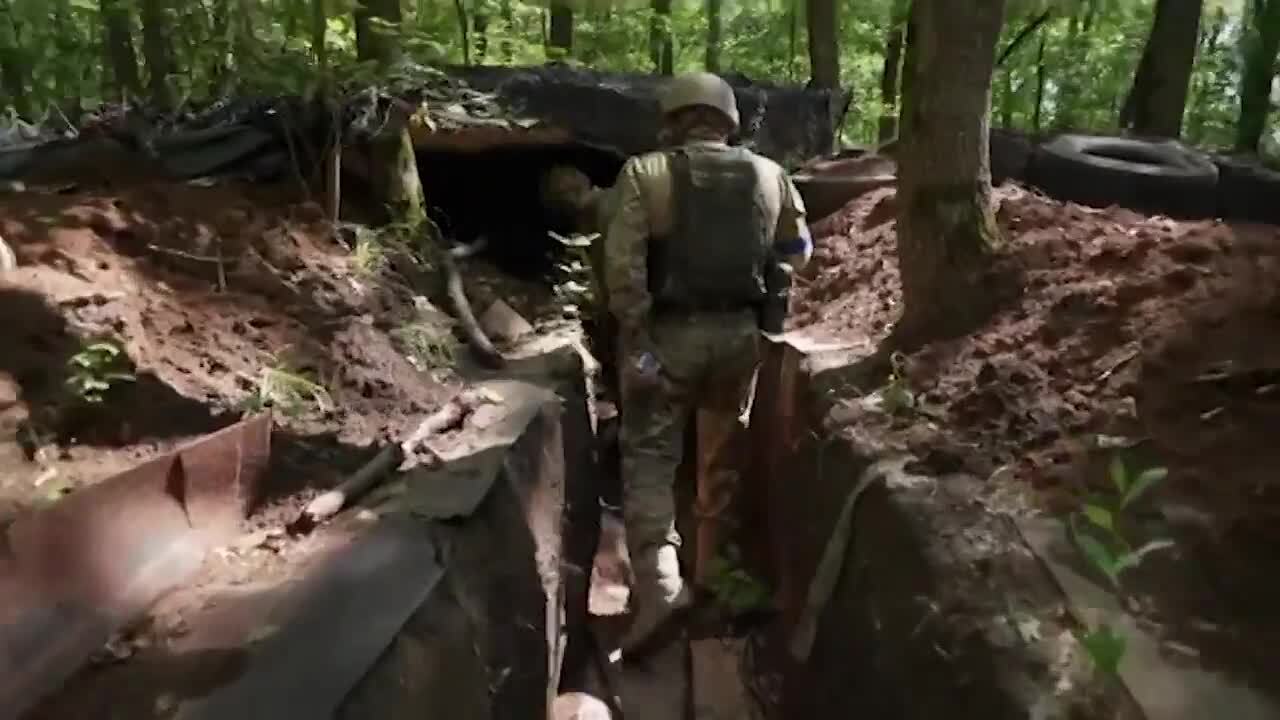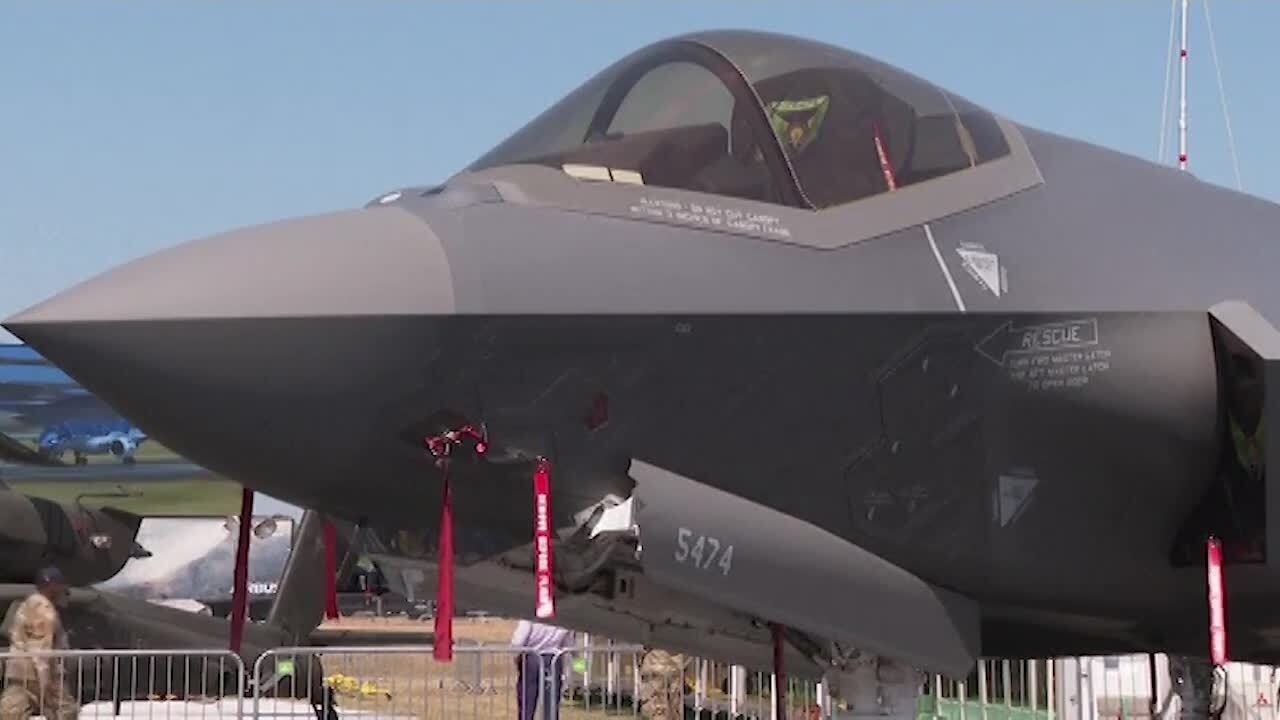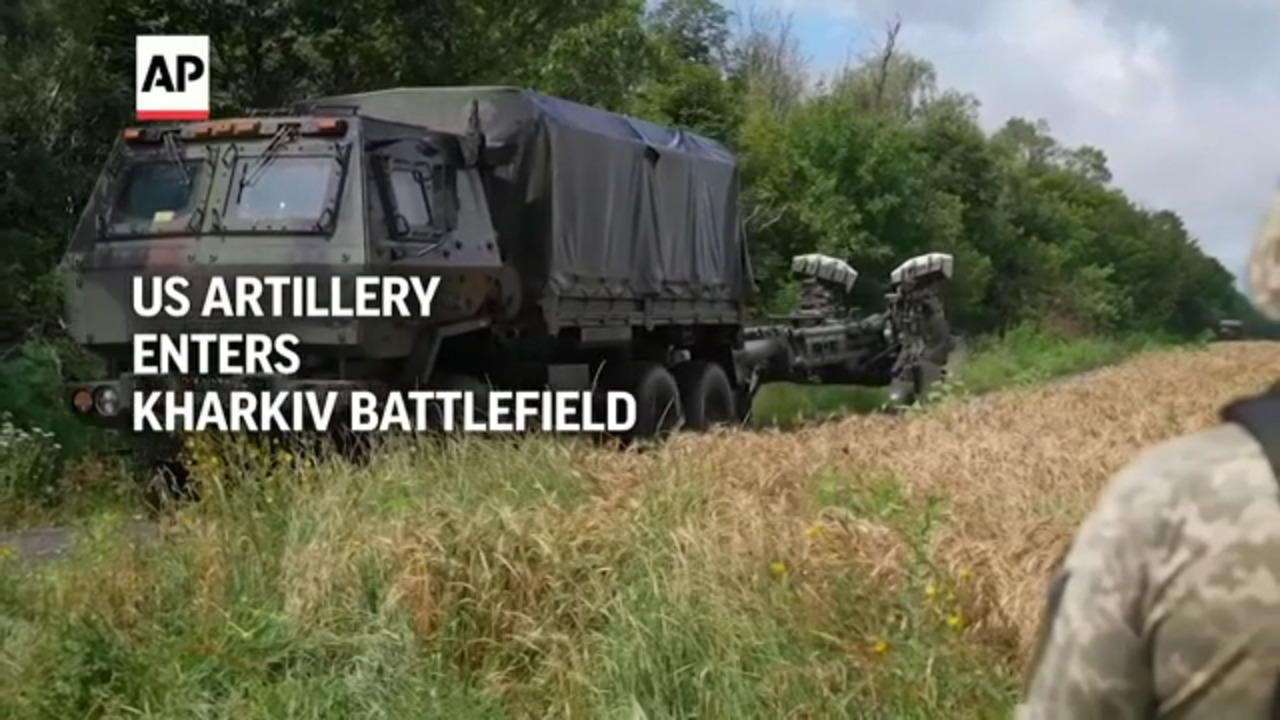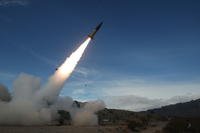Manufacturer: BAE Systems
Services: United States Navy, United States Air Force
Power plant: Two General Electric turbojet engines with afterburners
Speed: 1,600 mph (Mach 2)
Range: 1,300 miles
The supersonic QF-4 is a reusable full-scale, remotely piloted aerial target modified from the F-4 Phantom fighter jet. The QF-4 provides a realistic full-scale target for air-to-air weapons system evaluation, development and testing at Tyndall Air Force Base, Fla., and Holloman AFB, N.M.
The QF-4 is a remotely controlled target, which simulates enemy aircraft maneuvers. The aerial target can be flown by remote control or with a safety pilot to monitor its performance. The QF-4 is flown unmanned when missiles are fired at it, and only in specific over-water airspace authorized for unmanned flight. When flown unmanned, an explosive device is placed in the QF-4 to destroy the aircraft if it inadvertently becomes uncontrollable.
The QF-4 is equipped to carry electronic and infrared countermeasures to fully evaluate fighters and weapons flown and fired against it. Full-scale aircraft can be flown totally by computer, or controlled manually during takeoff and landing using a mobile control station located at the runway. As a safety precaution, a chase plane trails the QF-4 during critical periods of flight.
First flown in May 1958, the Phantom II originally was developed for U.S. Navy fleet defense and entered service in 1961. The Air Force evaluated it as the F-110A Spectre for close air support, interdiction and counter-air operations. In 1962, U.S. Air Force version was approved. The Air Force's Phantom II was designated F-4C, and first flew May 27, 1963. Production deliveries began in November 1963.
The F-4 was the primary fighter-bomber aircraft in the U.S. Air Force throughout the 1960s and 1970s. F-4s also flew reconnaissance and "Wild Weasel" anti-aircraft missile suppression missions. Phantom II production ended in 1979.
The modified F-4 became the QF-4. It is the successor to the QF-106 in the Air Force aerial target inventory.
The aerial target fleet is operated and maintained by the 82d Aerial Targets Squadron, located at Tyndall AFB. The squadron is a subordinate unit of the 53rd Weapons Evaluation Group at Tyndall AFB. The 53rd WEG reports to the 53rd Wing at Eglin AFB, Fla. The QF-4 program attained initial operational capability in 1997.
